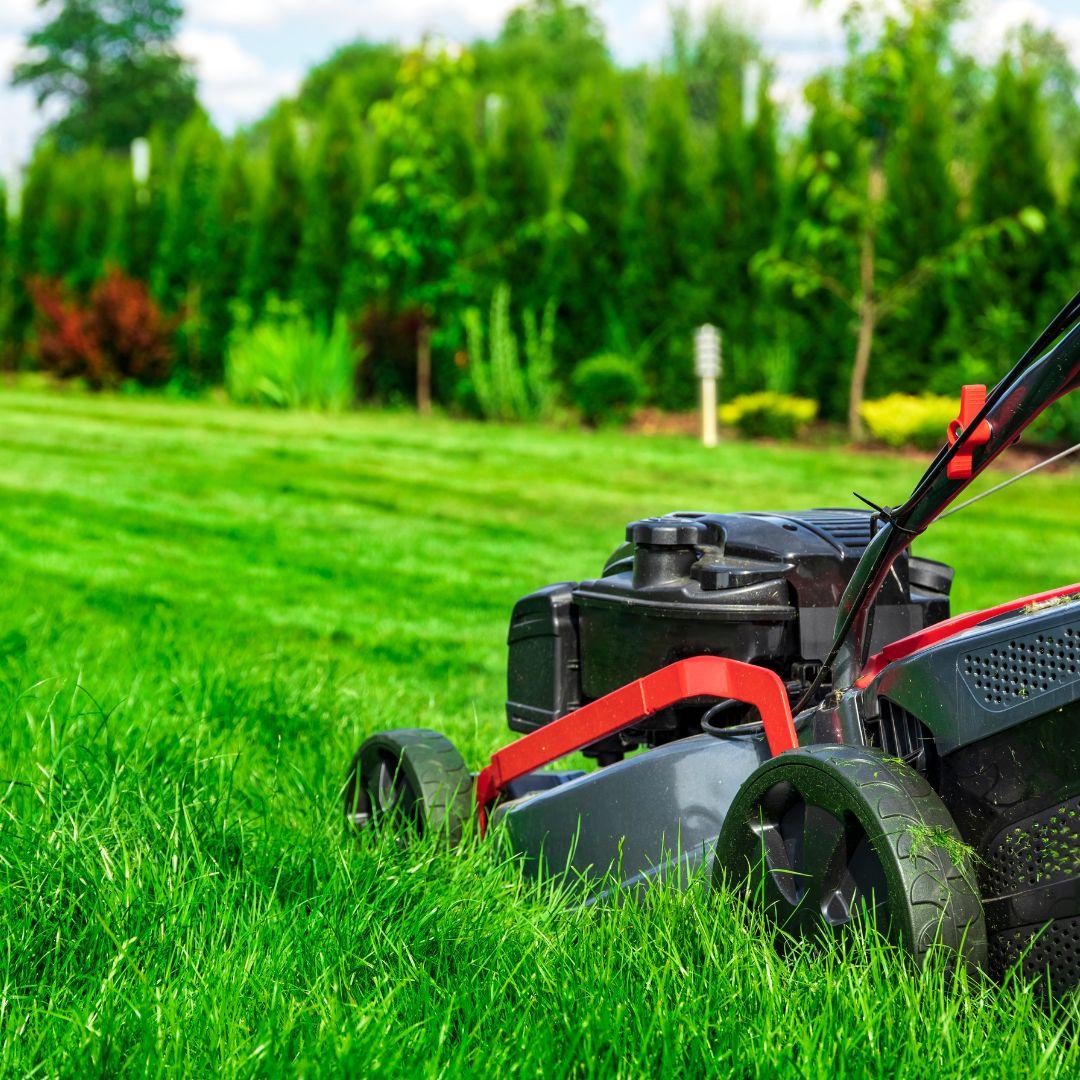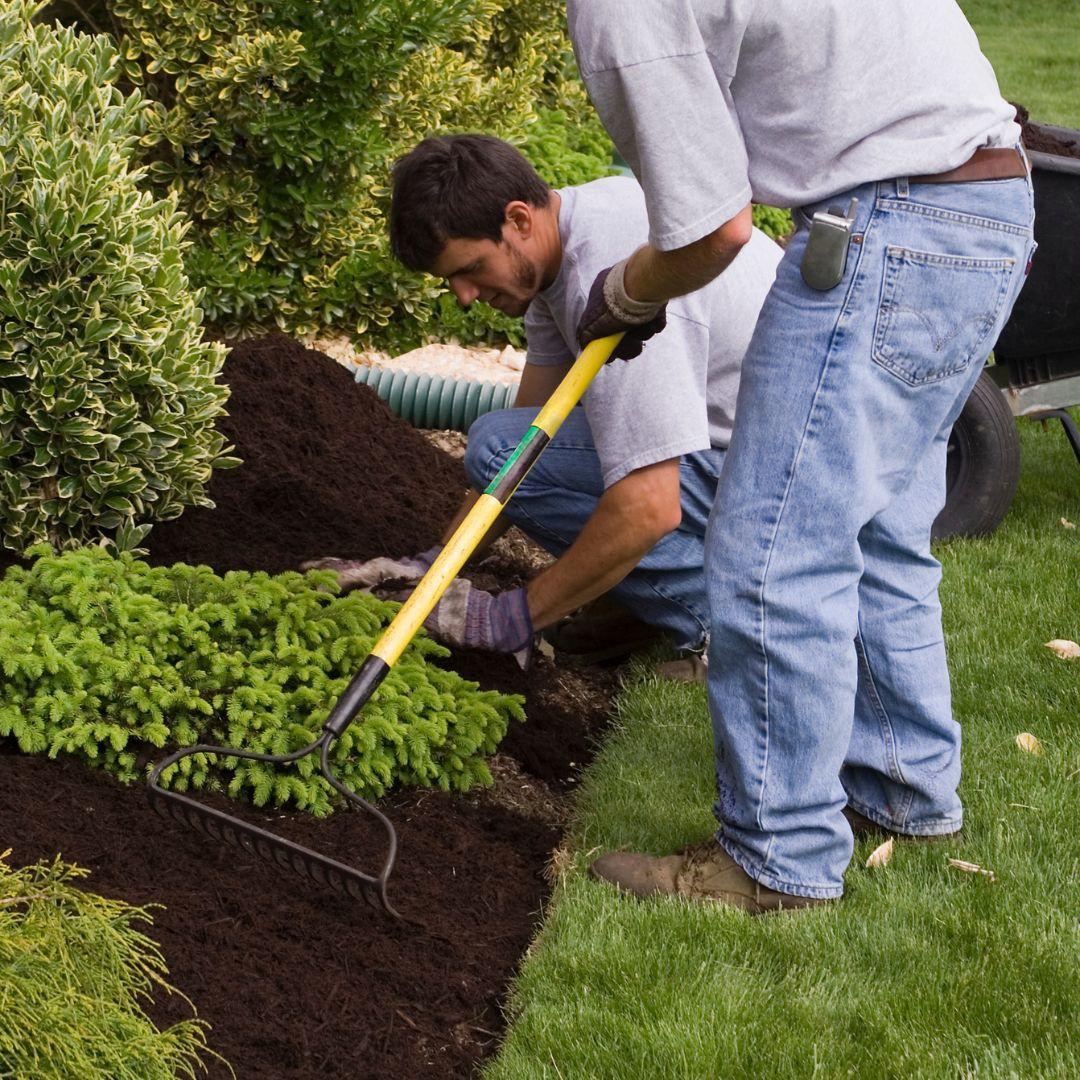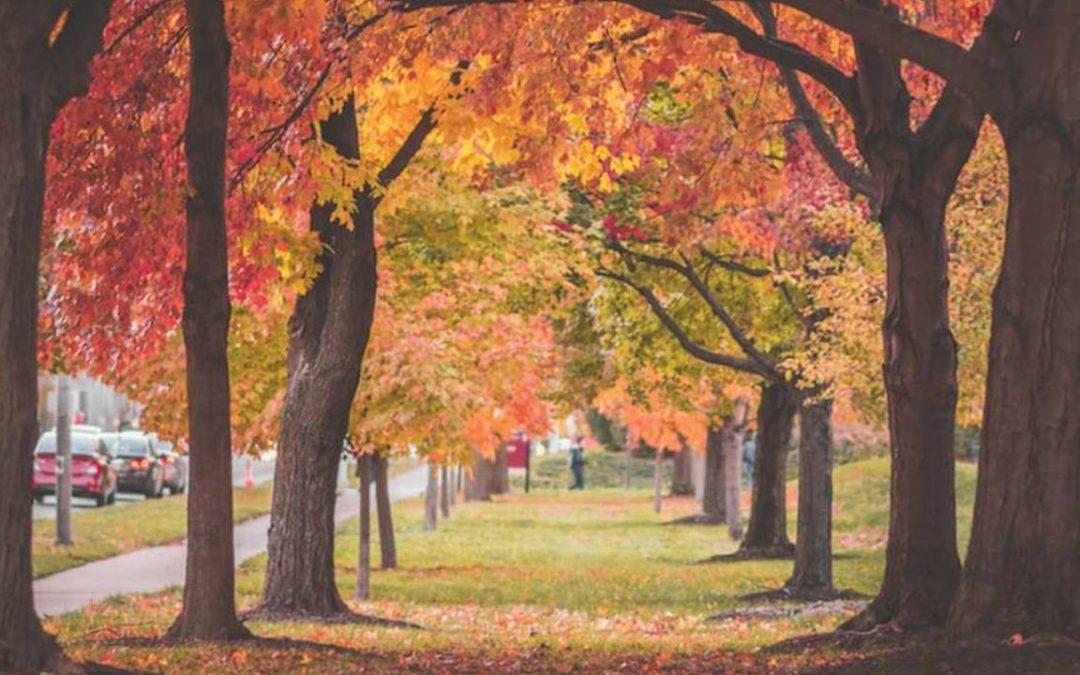Fall Landscaping Checklist: Indiana
Here at McCarty Mulch & Stone, we have prepared a fall landscape checklist for our fellow Indiana residents so they can know precisely how to care for their fall landscape and prepare it for the coming winter.
In Indiana, taking care of your landscape in the fall requires different methods than in other areas of the country and planting zones. Indiana’s planting zones range from 5b to 6b, meaning that gardeners and landscapers need to prepare their landscapes for the cold weather early, preferably in fall.
Our seasons in Indiana range from mild summers to severe winters. For this reason, much of the work that has to be done on gardens and landscapes in the fall months is centered around preparing the plants and soil for the long, hard winter ahead.
While every landscape is different, this checklist can be used as a guide for taking care of your lawn and garden beds so that both you and your plants can enjoy the fall weather and rest easy over the winter.
Lawn Care Task #1: Raking Up Leaves & Pulling Out Weeds
While raking up fallen leaves is a sign of fall, it is not done just for the sake of aesthetics. Instead, raking up dead leaves is beneficial to your landscape’s health.
Fallen leaves can act as a barrier that prevents light, water, and nutrients from getting into your grass, and leaves can also shelter invasive pests. Getting rid of the leaves ensures your lawn stays healthy throughout the fall.
Likewise, the autumn months are a great time to focus on weeding your lawn and garden. When pulling weeds, it is essential to remove as much of the root of the plant as possible so that it does not have a chance to grow back. An alternative to this is to use a herbicide.
Lawn Care Task #2: Mowing & Watering
Once your lawn is free of leaves and weeds, it is time to mow it. For Indiana landscapes, it is best to keep grass between 2.5 and 3.5 inches tall, mowing at the lower end of the range for your final cutting of the season.
Don’t forget to water your lawn over the fall months. Most lawns require about one inch of water per week. You do not want to overwater your grass, so keep an eye on the weather, and if your lawn gets enough rainwater that week, then there is no need to turn on the sprinklers.
Lawn Care Task #3: Feeding & Seeding
If your lawn needs some extra care, the fall months are an excellent time to use a nitrogen-based fertilizer. While you could purchase fertilizer, an alternative is to allow your grass cuttings to break down into the lawn, which will naturally add nutrients to your yard.
Fall is the best time to plant grass seed if you live in a northern region. This gives the grass seed plenty of time to dig down and establish strong roots underneath the winter landscape. Then when spring comes and temperatures warm up, the seed has a strong foundation for sprouting and growing leaves. You should aim to plant the seed between mid and late September. The temperatures are cooler than in summer, but the ground hasn’t frozen yet. However, weather can be fickle, so aim for a time when temperatures are consistently between 50 and 60 degrees.
Don’t simply grab a bag of grass seed and begin aimlessly tossing it on the ground. Start by breaking up the hard and compacted soil where you want your new seed to go with a tiller or spade fork. Mix in high-quality compost or soil in the top layer of the ground. Make sure to go a few inches deep to create a good environment for the length of the roots. Level the ground to prevent low spots where pooling can happen. This encourages even drainage once your lawn is in place. You could spread it by hand if you are doing a small patch. However, if you are doing a large space, then a handheld, circular, or drop spreader is a better option. Next, you need to water your seeds so that they are moist but not soaking wet. This prevents them from getting dried out and scorched in the sun. If you didn’t use mulch to cover the seeds, you may need to water it multiple times a day. However, watering advice needs to be taken with a caveat. Always check your local weather forecast. If there is supposed to be rain, work with it by accounting for it in your watering schedule.
Garden Care Task #4: Harvesting Fruits & Vegetables and Cutting Flowers
Turning to your garden….Fall is the final harvest season and every plant has a different age of maturity, but if you have unripe fruits or vegetables and the first frost of the season has already arrived, you will likely need to harvest those crops and find out how to ripen them off the plant.
Along with the edible produce in your garden, fall is the time to harvest any cut flowers that are still blooming. If your flowers are not in peak condition, you can gather them, dry them, and turn them into beautiful autumn decorations.
Garden Care Task #5: Overwintering Fragile Bulbs & Planting Spring-Blooming Bulbs
In Indiana, some flowers like dahlias, gladiolas, and begonias perform very well in the summers but are too fragile for our cold winters. If you have any fragile bulbs in your garden, the fall is an excellent time to dig up those bulbs and store them for the winter. When you keep these bulbs in a cool (but frost-free) dry bucket with peat moss, you will be able to plant them again in the spring.
There are other varieties of flowering bulbs that are actually planted in the autumn so that they bloom in spring. If you choose to plant spring-blooming flowers, it is best to plant them six weeks before the ground freezes.
Garden Care Task #6: Pruning Perennials & Pulling Annuals
Once you’ve taken care of the fragile bulbs in your garden, you can start pruning any perennials that need to be cut down before the winter. With the proper pruning, you can refresh a plant so that it grows back in the spring with fuller leaves, more flowers or fruits, and a more even appearance overall.
Late fall in Indiana is also the right time to pull any dead annuals from your garden beds. You don’t want to leave dead plants in your soil over the winter as they can become a haven for insects and diseases. If you are not replacing the dead annuals with spring-blooming plants, you will need to protect your garden beds with a layer of mulch.
 Garden Care Task #7: Mulching for Warmth and Protection
Garden Care Task #7: Mulching for Warmth and Protection
One of the best things you can do in the fall to protect and prepare your Indiana landscape for winter is to add mulch. A thick layer of mulch around the base of plants can extend the growing season and protect the plant from ever-changing temperatures as we move into the cold season.
It is recommended to apply about 2-3 inches of mulch over the root system of your plants and trees, but be sure to pull mulch away from direct contact with the trunk of trees and shrubs so that they do not rot. Mulch is a blanket for soil and plants and keeps them warm over the winter.
An Indiana Fall Landscaping Checklist
Here in Indiana the months of September, October, and November are the perfect time to spend making your landscape look beautiful in the fall weather and prepping it for the cold winter ahead.
This checklist is a guide, and it is not comprehensive. There will always be tasks that one landscaper or gardener may need to focus on, while another may not have to perform that task at all. The most important thing anyone can do for their fall landscaping in Indiana is to give their plants and garden beds a thick layer of mulch to protect them from the elements. McCarty’s Mulch & Stone has many different mulches you can choose from, and we can deliver as much as you need right where you need it. Remember at McCarty Mulch & Stone we have your Indiana Landscapes covered! Contact us today at (317)-751-5956 to find the best mulch for your needs!




